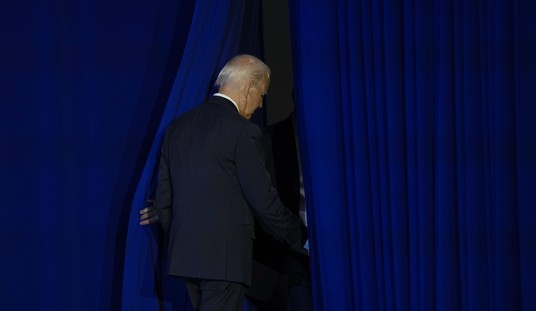What is President Barack Obama’s “debt failsafe” trigger? It is a means for liberals in Washington to increase taxes on you in the name of deficit reduction and avoids specific consent of the governed for these tax increases. If a mechanism to automatically increase taxes is raised by the “Gang of Six,” a bipartisan group working to reduce the deficit, or the President’s bipartisan bicameral negotiating team on reducing the debt, then conservatives should push back against this terrible, and possibly unconstitutional, idea.
I wrote in Human Events on Monday that the “debt failsafe” idea is a means for President Obama to use the popular idea of tax reform as cover to implement $1 trillion in tax increases on all Americans.
That’s the upshot of his plan to reduce the deficit. What he laid out last week was light on specifics, heavy on partisan rhetoric — and even heavier on ideas to increase taxes. Obama did promise to reduce the federal deficit by $4 trillion over the next 12 years. Yet he won’t be accountable for enforcing most of these promised savings, because he won’t be president when most of them kick in.
James Pethokoukis argues that the President wants to raise more than $1 trillion with tax increases over the next 12 years. He wrote for Reuters that “the 3.4 percentage points of savings, more than half — 1.9 points — comes from taxes.” Pethokoukis argues that the Obama plan would raise over $1 trillion by letting tax cuts expire and raise an additional $1 trillion under the cloak of “tax reform.” Any way you slice it, this is a terrible idea that should be rejected by the American people.
This idea should not be part of negotiations on increasing the statutory debt limit.
The president said in his “Remarks on Fiscal Policy” on April 13 that he wants to use “tax reform” as a guise to remove $1 trillion in “tax expenditures” and “spending in the tax code.”
So this is my approach to reduce the deficit by $4 trillion over the next 12 years. It’s an approach that achieves about $2 trillion in spending cuts across the budget. It will lower our interest payments on the debt by $1 trillion. It calls for tax reform to cut about $1 trillion in tax expenditures — spending in the tax code. And it achieves these goals while protecting the middle class, protecting our commitment to seniors, and protecting our investments in the future.
The President was quoted in Bloomberg on April 14, further explaining the idea:
It’s important that we look at our tax code and find a way to work together to not only simplify and make the tax system fairer, but also that we use it as a tool to help us achieve our deficit targets.
Conservatives and liberals agree that we need comprehensive tax reform. But liberals want to use it to raise revenues and conservatives want to make it revenue neutral. Liberals believe that the government has a right to take your privately earned income and that any deductions or tax credits are “spending in the tax code.” A flat tax with zero deductions is a great idea, but it should not be done as a sneaky means for liberals to increase the tax burden on American citizens.
To be clear, conservatives do believe that revenues would increase because of economic growth as a result of tax reform over time. Liberals want to use the idea of tax reform to increase taxes on all Americans immediately. If you remove deductions from the tax code and don’t provide a revenue neutral tax cut for all, then you are using tax reform to increase taxes.
The means to use the idea of tax reform to raise taxes is the President’s idea of a “debt failsafe.” The president explained in his April 13 speech his idea:
Now, in the coming years, if the recovery speeds up and our economy grows faster than our current projections, we can make even greater progress than I’ve pledged here. But just to hold Washington — and to hold me — accountable and make sure that the debt burden continues to decline, my plan includes a debt failsafe. If, by 2014, our debt is not projected to fall as a share of the economy -– if we haven’t hit our targets, if Congress has failed to act -– then my plan will require us to come together and make up the additional savings with more spending cuts and more spending reductions in the tax code. That should be an incentive for us to act boldly now, instead of kicking our problems further down the road.
According to a White House fact sheet
Debt on a Declining Path, Backed Up By An Across the Board “Debt Failsafe” Trigger: The President’s framework would require that, by the second half of the decade, our nation’s debt is on a declining path as a share of our economy. To enforce this requirement, the President is calling on Congress to enact:
- A Debt Failsafe that will trigger across-the-board spending reductions (both in direct spending and spending through the tax code) if, by 2014, the projected ratio of debt-to-GDP is not stabilized and declining toward the end of the decade. Consistent with prior fiscal enforcement triggers put in place by Presidents Reagan, George H.W. Bush and Clinton, the trigger should not apply to Social Security, low-income programs, or Medicare benefits.
This is a budgetary mechanism that would allow across the board cuts in concert with a tax-increase measure. If structured like Gramm-Rudman Act of 1985, if annual mandatory budget caps were not hit then automatic cuts to spending would kick in — along with automatic tax increases. The details of this plan are very important because it will be very difficult, if not impossible, to craft a budgetary mechanism that is constitutional. Remember, the first incarnation of Gramm-Rudman was challenged in the federal courts successfully.
Here is how it may work.
Gramm-Rudman empowered the Administration to sequester funds based on Office of Management and Budget projections if deficit targets were not met for a year. For example, if Congress were to pass today a Gramm-Rudman mechanism to make next year’s target $1.4 trillion and at the end of next year the deficit was $1.5 trillion, then the Administration would be empowered to sequester $100 billion in spending.
If the Obama debt failsafe trigger was law, then that provision would empower the Administration to increase taxes as one means to hit the target for the year. If there were a statutory mix of 50% cuts to 50% revenue increases as part of the trigger, then the Administration could look for $50 billion in tax increases to modify the tax code through removing deductions, tax credits or adding some sort of a payroll tax surcharge to make up the difference in addition to $50 billion in spending cuts. Congress’ only means to stop the tax increase would be to repeal the debt failsafe trigger.
The “debt failsafe” trigger seems to be modeled on the Bipartisan Policy Center’s “SAVEGO” proposal, but President Obama has removed Social Security, Medicare and some other programs from the idea according to Bloomberg. According to the Bipartisan Policy Center:
The remainder of the shortfall – could be eliminated by directing the Secretary of the Treasury to increase tax rates proportionately to reach the target; or, alternatively or in addition, to implement regulations that have the effect of capping, for the upcoming tax year, the revenue losses associated with any tax expenditure(s) set forth in the “Estimates of Total Income Tax Expenditures” in the Analytical Perspectives volume of the current “Budget of the U.S. Government,” provided that no individual tax expenditure may be reduced by more than 50 percent of its revenue cost in any single year.
This seems like an unconstitutional delegation of legislative branch powers at first glance. It would empower unelected bureaucrats to increase taxes without a specific vote of Congress. This idea is far different from the executive branch withholding funding for agencies pursuant to an across the board cut, because federal spending is treated differently than edicts from government officials that people must pay increased taxes.
Matt Yglesias of Think Progress thinks the provision allowing the automatic increase of taxes is a great idea because it allows federally elected politicians to raise taxes without having to vote for the tax increases:
What I think is actually promising here is the reference to tax deductions as being part of the trigger. That means that insofar as members of congress are aware that these loopholes should be closed but don’t actually want to vote for closing them, the trigger mechanism will give them a way to vote for something that makes closure inevitable and then just passively fail to vote to restore the loophole. Our existing tax code, after all, contains plenty of provisions that nobody would put in were they not already there but that few people feel bold enough to specifically try to take out.
Cato’s Dan Mitchell is spot-on when he argues that big spending politicians will be allowed to automatically raise taxes as an easy means to cover overspending.
If politicians in Washington spend too much and cause more red ink, which happens on a routine basis, Obama wants a provision that automatically would raise taxes on the American people.
The president has put a “debt failsafe” trigger out in the public domain to convey that he is serious about reducing the deficit. This idea is a bad one that would empower unelected officials to make decisions about tax policy — decisions that should be handled by elected officials.














Join the conversation as a VIP Member